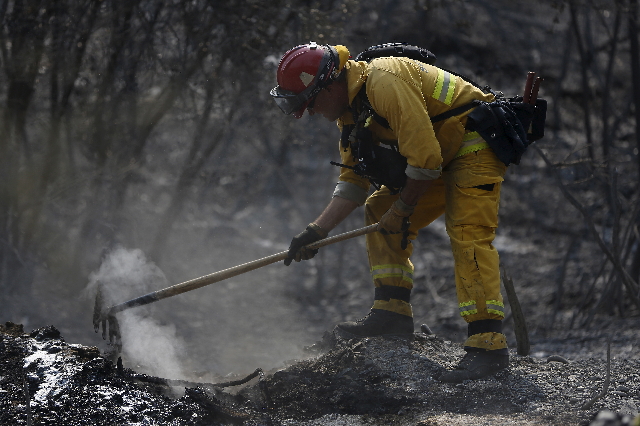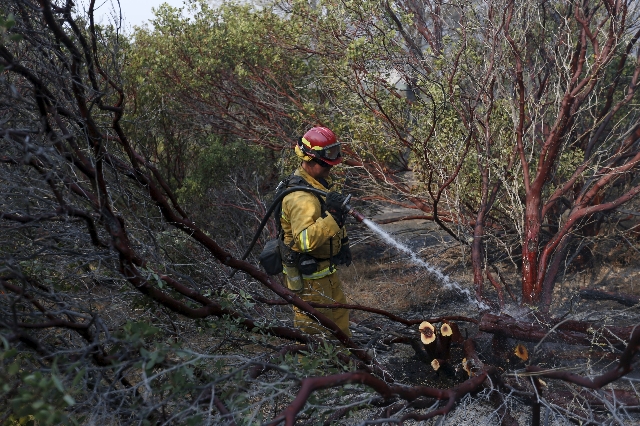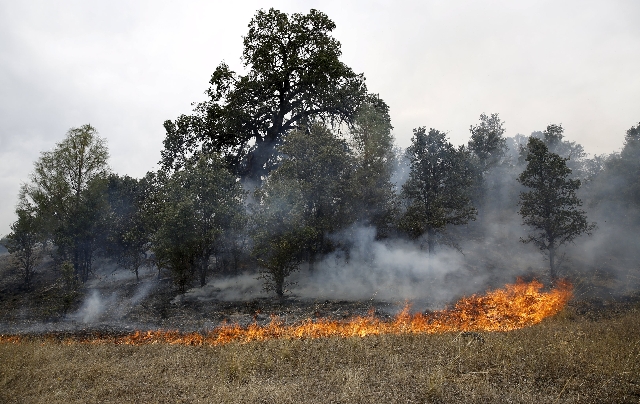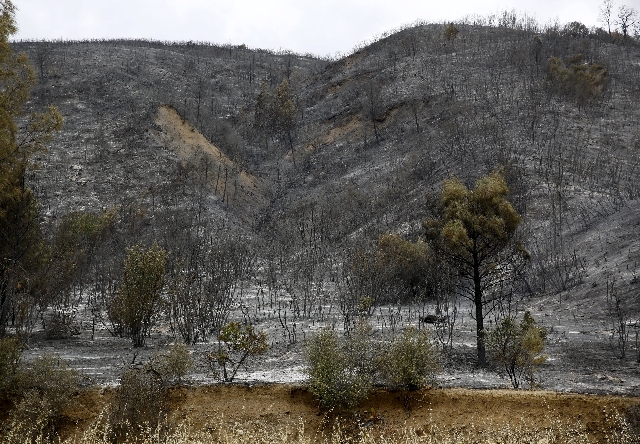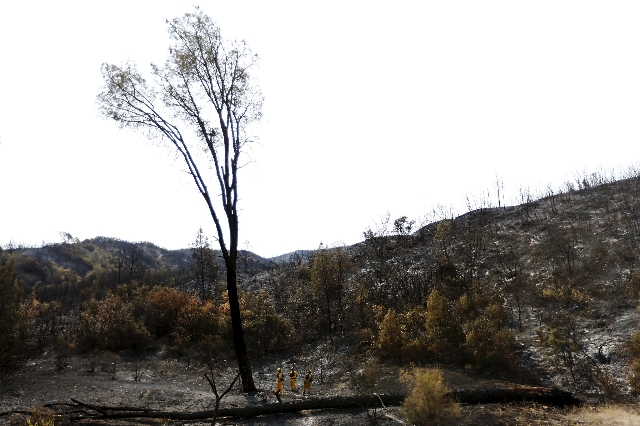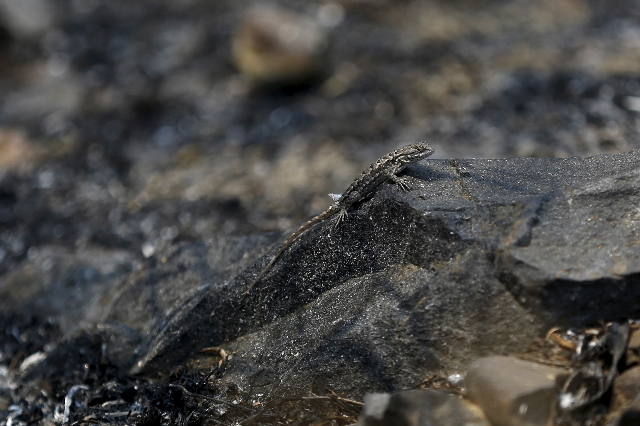Firefighters closing in on Calif. wildfire 8 days later — VIDEO
LOS ANGELES — The battle to tame California's fiercest wildfire this year, the big Rocky blaze north of Napa Valley wine country, neared a turning point on Thursday as ground crews fighting the flames for an eighth day steadily extended their control lines.
The containment level for the blaze, a measure of how much of its perimeter has been firmly enclosed within fire breaks hacked through unburned vegetation by firefighters, rose to 40 percent on Thursday - double what it was two days earlier.
Fire crews had made significant headway since Tuesday after triple-digit temperatures abated and humidity rose.
"The last couple of days have actually been good days for us, with the weather cooperating," California fire spokesman Daniel Berlant said. "If we can make it through today, we definitely will have turned a corner and will have gotten an upper hand on the fire."
The fire's overall footprint held steady from Wednesday at 69,600 acres burned, while the number of structures listed as immediately threatened declined slightly to just over 6,500, down from nearly 7,000 the day before.
The tally of property losses edged up, from 91 to 96 structures destroyed, including 43 homes. But the California Department of Forestry and Fire Protection (Cal Fire) reported that damage inspections were finished and barring further spread of fire, no additional losses were expected.
Berlant said it was too soon to declare victory. A key test will be if containment lines hold once gusty winds and hotter, dryer weather returns as forecast.
More than 13,000 people remained under evacuation orders or advisories in the fire zone, which spans parts of three counties in the rural ranch lands 110 miles north of San Francisco. Smoke from the blaze has been visible as far away as the Napa wine-making region 80 miles to the south.
Governor Jerry Brown, who declared a state of emergency last week, planned to visit a ranch at the edge of the fire zone on Thursday to be briefed by Cal Fire commanders.
How the Rocky Fire ignited on July 29 was still undetermined, but the blaze is one of more than two dozen conflagrations that erupted across the state during the past two weeks, many of them following a flurry of dry lightning strikes.
The fires have been fed by thickets of chaparral, scrub oak and timber left desiccated from four years of severe drought. Drought conditions have stoked extraordinary wildfire activity this summer in several other Western states as well, including Oregon, Washington, Idaho and Alaska.
Cooler, moister weather early this week in California helped firefighters gain control over several smaller blazes on Wednesday, reducing the number of major active wildfires from 23 to 19 overnight, Berlant said.
The Rocky Fire is by far the biggest and most destructive in California this season, more than twice as large as the year's previous record-holder, a 31,000-acre blaze in San Bernardino County east of Los Angeles in June.



